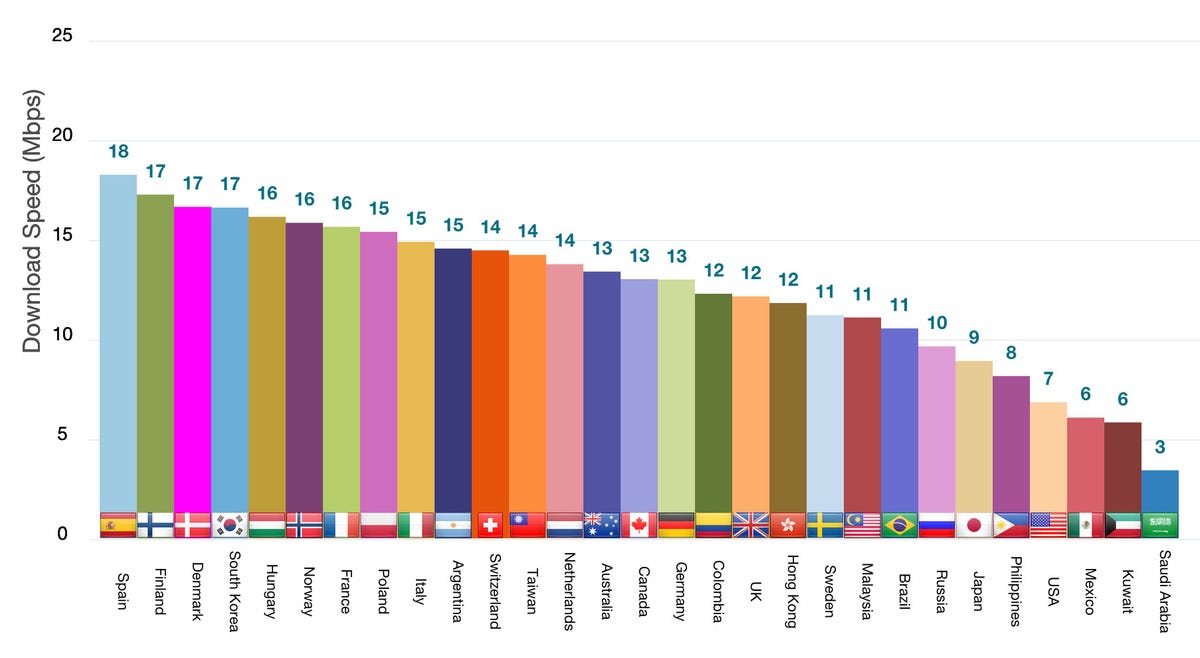
OpenSignal
After backsliding somewhat last year in the United States, 4G mobile networks are spreading farther and performing better in 2015.
That’s according to a new report from OpenSignal, which gathers data from its 11 million users to chart mobile networks around the world. In its February 2014 report, the US had average download speeds of 6.5 megabits per second, but a year later that’s edged upward to 7Mbps.
That’s still nowhere near the 9.6Mbps the company found in 2013, but 4G networks have spread to vastly more people since those early days. In the 2014 report, US subscribers spent 67 percent of their time on 4G networks, but for 2015, that increased to 77 percent.
Mobile networks have spread into every corner of people’s lives in wealthy nations, fueling the use of social networks and blurring the boundaries between work and personal life. Despite the technological progress, though, it remains complicated technology, with download rates even in the top-ranked country, Spain, only reaching 18Mbps on average compared to the 4G’s peak promised rate of 150Mbps.
Although Spain comes out on top for download speed, it’s probably not the overall winner. Finland, Denmark and South Korea on average are at 17Mbps, and coverage is better so mobile customers spend more of their mobile network time on 4G. South Korea is a whopping 95 percent, the best on the list, while Finland and Denmark are at 65 percent and Spain is at 52 percent when it comes to time spent on 4G.
Among US carriers, Verizon leads in terms of coverage, at 86 percent, followed by AT&T, T-Mobile, Cricket and Sprint. But when it comes to speeds, T-Mobile is tops at 10Mbps, followed by Verizon, AT&T, Sprint and Cricket.
4G networks — fourth-generation designs that use the Long Term Evolution (LTE) technology — are gradually becoming more ordinary as carriers upgrade their equipment and consumers buy new phones. But you’ll still have to be patient, especially if you’re outside major cities where 3G, 2G or no coverage at all still are common.
There’s a reason you have to be patient with the 4G transition: it’s hard and expensive. Carriers must license new radio spectrum from governments, upgrade equipment on tens of thousands of cell phone radio towers, and often upgrade the “backhaul” communication links those towers use to link to the Internet, too.
Their total 4G investment will be $1.7 trillion from 2014 through 2020, said Dan Warren, senior technologist for the GSMA mobile industry group. And after that, they have to do it all over again for 5G networks expected to boost data-transfer speeds starting in 2020.



